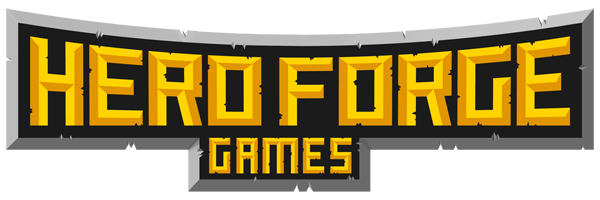The first post in this series gave an overview of the core elements of D&D, while part II looked at
progression and balancing modular elements.
When designing features for role-playing games or videogames, one of the major considerations is the magnitude (Pop! Pop!) of the additional work that the proposed feature places on the entire project, compared to the overall value of the feature.
Using a videogame example, heavily scripted AI behaviors might be fine in a constrained test-bed, but when you subsequently roll these out across an entire game the amount of work becomes unmanageable (especially when compared to an alternative solution, such as a more sophisticated AI algorithm).
I mention this first because it relates to the assumed goal of D&D 5th edition that it will support different styles of combat and will work with content from earlier editions, and because this post is about combat.
Combat
Although the basics of combat in D&D have remained (largely) unchanged, the details have changed greatly from edition to edition:
Attacks:
• Basic/Expert: d20 + Ability Mod + Modifiers ≥ Character To Hit vs AC number
• AD&D: d20 + Ability Mod + Modifiers ≥ Attack Matrix number
• 2nd Ed: d20 + Ability Mod + Modifiers ≥ THAC0 calculated target number
• 3rd Ed: d20 + Ability Mod + BAB + Modifiers ≥ AC
• 4th Ed: d20 + Ability Mod + ½ Level + Modifiers ≥ AC
Multiple attacks or scaling damage mechanic:
• Basic/Expert: Multiple attacks per round at 20th level (additional attacks every 5th level after that)
• AD&D: Multiple attacks per round for Fighter classes only, starting from Level 7 for fighters, later for Rangers and Paladins
• 2nd Ed: Multiple attacks per round for Fighter classes only, starting from Level 7 normally or partially at level 1 with Weapon Specialization optional rule
• 3rd Ed: Multiple attacks per round for all classes, starting from Level 6 for fighters, later for other classes
• 4th Ed: Various Encounter or Daily powers at higher levels offering multiples of weapon damage (2[W] encounter, 3[W] daily, etc)
Now, it’s easy enough for a game to replicate these different styles and magnitudes of combat for each character, the difficulty when pursuing this course is in the creation of content (modules/adventures) where you need to cater for characters who have the equivalent power of a Basic character compared to others that have the front-loaded power of a 4th Edition character.
Thinking about a character of level 1-4 in a 5 round combat, the average damage per round is likely to be something like this for each edition:
• Basic/Expert: 1[W]
• AD&D: 1[W]
• 2nd Ed: 1[W]
• 3rd Ed: 1[W]
• 4th Ed: 1.2[W]
At higher level (such as 6-8) this changes:
• Basic/Expert: 1[W]
• AD&D: 2[W]
• 2nd Ed: 2[W]
• 3rd Ed: 2[W]
• 4th Ed: 2[W] (3 Encounter and 1 Daily power used)
If you separate Basic and Expert rules from this progression, then there’s a pretty good correlation across the editions. This means that it should be possible for Basic 5th Edition characters (that only simple melee or ranged attacks) to fight similarly to Advanced 5th Edition characters that have powers-style attacks (like those of 4th Edition).
However, this becomes slightly more complicated when you factor in the HP for Level 1 characters or 1 HD monsters.
Character starting HP ranges:
• Basic/Expert: Range 1-11 (Random d4, d6, or d8 + Con Mod)
• AD&D: Range 1-11 (Random d4, d6, or d8 + Con Mod)
• 2nd Ed: Range 1-11 (Random d4, d6, or d8 + Con Mod)
• 3rd Ed: Range 4-14 (4, 6, 8 or 10 + Con Mod)
• 4th Ed: Range 20-30+ (Constitution Score + 10, 12 or 15)
Monsters have a similar HP range:
• Basic/Expert: 4-8HP
• AD&D: 4-8HP
• 2nd Ed: 4-8HP
• 3rd Ed: ~8HP
• 4th Ed: Constitution + 10, 12 or 15 (giving range of 20-30+)
Once the character and monster starting HP are compared to the average weapon damage at 1st level, it’s clear that mixing and matching all of the characters and monsters from various editions isn’t going to just work. A 4th Edition monster is going to cream an AD&D style character, and and all AD&D monsters are going to go down like minions to an equivalent level 4th Ed character.
As I mentioned at the start, any decision taken about how to deal with the disparate HP amounts of each of the editions needs to be made with consideration for the amount of work it’s going to add to every module and supplement that the game comes out with.
Here are three possibilities for how 5th Edition deals with the HP of monsters and characters:
• All characters/monsters have low starting HP (probably like 3rd Edition)
• Basic characters/monsters have a low starting HP (like 3rd Ed) and Advanced characters have higher starting HP (like 4th Ed)
• All characters/monsters have high starting HP (like 4th Ed)
Considering the scenario where Basic and Advanced characters have different starting HP, you would then need all encounters to be presented with two sets of stats, one set with monsters with low HP for a party of Basic characters and then an alternate set of monsters with high HP for when the party is made up of Advanced characters. This is not desirable, because it adds to the amount of work that needs to go into each piece of content that is created.
In an alternative scenario, all characters have high starting HP, and conversion sheets are created for monsters in earlier editions so that any monster could be converted to 5th Edition’s unified rules. The conversion of a monster from earlier editions to ‘5th Edition’ might be as easy as simply adding 15-20HP to any monster of 1HD or more (½ HD monsters could remain as the equivalent of minions).

